Diamonds hold significant value, but determining their price can be challenging. While most people are aware of the four C’s (carat, clarity, color, and cut) that determine a diamond’s value, there are additional factors that can also influence its price.
One such factor is the shape of the diamond, which can have a significant impact on the price of a piece of jewelry. Therefore, it is crucial to consider how the cut and shape of a diamond affect its value before purchasing a diamond ring or selling existing jewelry. Which diamond cut retains its value?
In the following discussion, we will explore the advantages and disadvantages of various diamond cuts and shapes and how they are rated in the market. Let’s dive in and discover some intriguing information!
DESIGN YOUR OWN ENGAGEMENT RING: START WITH A SETTING OR START WITH A DIAMOND. IT’S REALLY UP TO YOU!
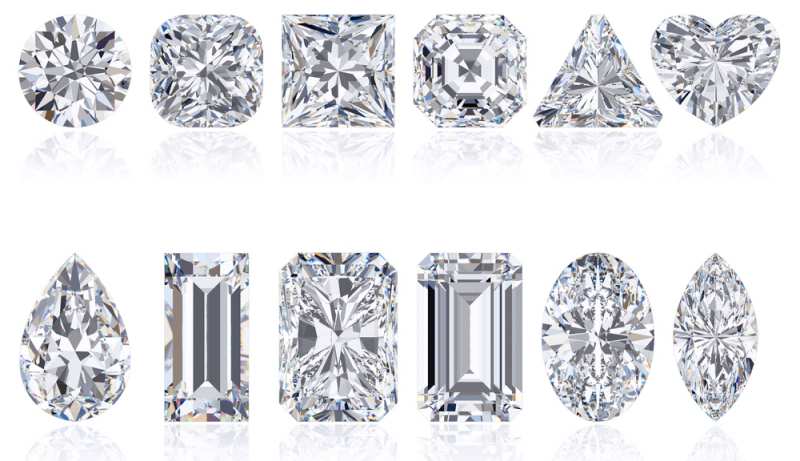
A Diamond Cut Vs. Diamond Shape
It is often overlooked that a diamond’s cut and shape are separate characteristics that contribute to its price evaluation.
The shape of a diamond pertains to its geometric form, such as round or square. In contrast, the cut refers to the specific facets that enable the diamond to reflect light, resulting in its brilliance and sparkle.
While cutting is necessary to shape a rough diamond, it is important to understand that these two aspects hold distinct implications when determining the value of a diamond.
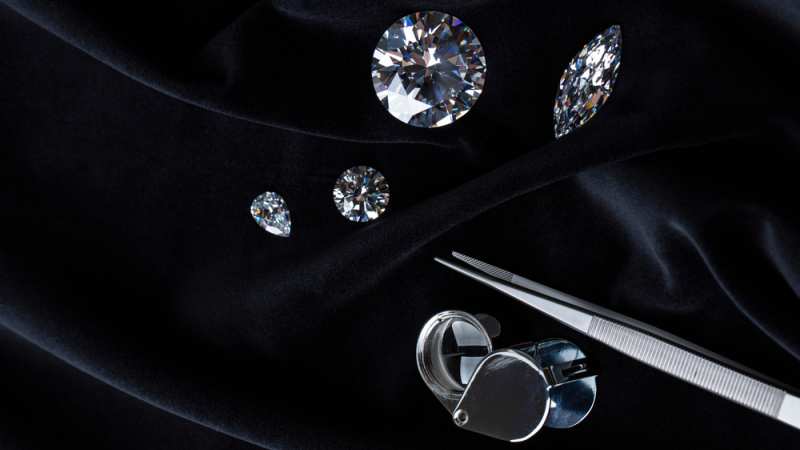
Why Is The Diamond Cut So Important?
The cut quality of a diamond has a significant impact beyond its visual appeal. A poorly cut diamond not only appears dull but also experiences a decrease in value.
The skillful craftsmanship involved in cutting a diamond determines its quality, which is categorized into four levels: Fair, Good, Very Good, and Excellent.
When it comes to grading a diamond’s cut, only specialists following the guidelines of the Gemological Institute of America (GIA) have the authority to do so, as the GIA is globally recognized as the foremost diamond grading laboratory.
In addition to the cut, the shape of a diamond is also taken into consideration when assessing its value.
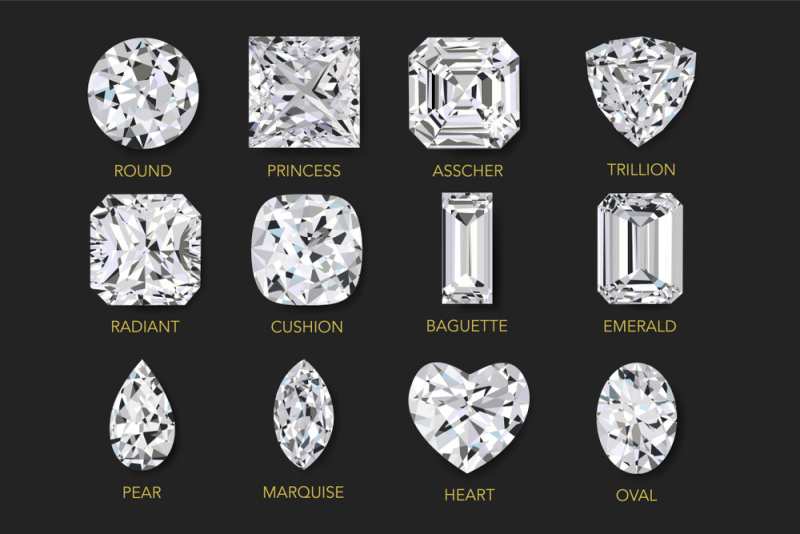
Different Diamond Shapes
Now, let’s explore a few popular diamond cuts and shapes after this brief introduction.
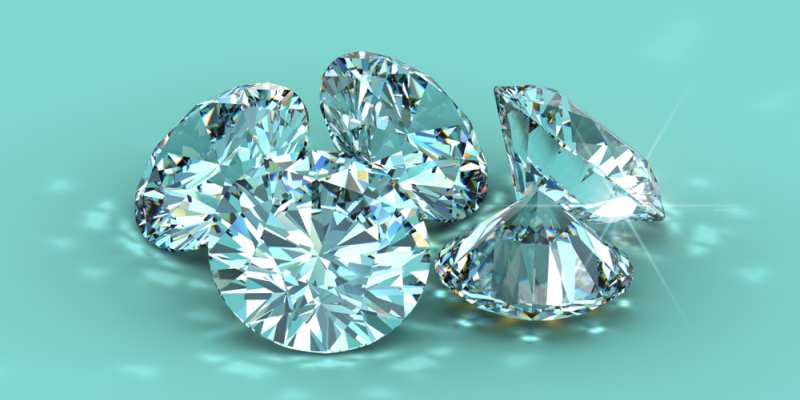
Round Shape
The round brilliant cut is the most common shape for diamonds, accounting for approximately 75% of all diamond sales worldwide.
Round diamonds tend to be more expensive due to the significant amount of diamond material that is lost during the cutting and polishing process. Only about 40% of the original stone is used to create a standard round-cut diamond.
Another factor that contributes to the higher price of round-cut diamonds is their popularity. As they are widely used in engagement rings, there is a higher demand for this shape. Suppliers, distributors, and vendors often charge a premium for round-cut diamonds to meet the increased market demand. Therefore, when purchasing a diamond, it is important to consider that you may need to allocate a larger budget for a round-cut diamond compared to other diamond shapes.
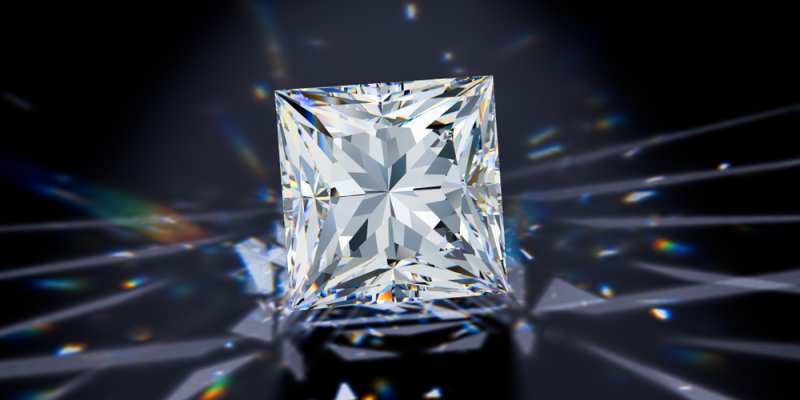
Princess Cut
The princess cut is the second most popular diamond shape, following the round brilliant cut. It features a square shape resembling an inverted pyramid.
One advantage of the princess cut is that it offers a comparable level of sparkle to the round brilliant cut but at a more affordable price range. This is mainly due to its unique shape.
The cost-effectiveness of the princess cut can be attributed to the minimal wastage of raw diamond material during the cutting and polishing process. A princess-cut diamond can utilize up to 80% of the original stone, whereas a polished round-cut diamond typically requires only around 40%.
If you desire a larger diamond but are mindful of your budget and prefer not to spend as much as you would on a round brilliant cut, the princess cut presents a beautiful alternative.
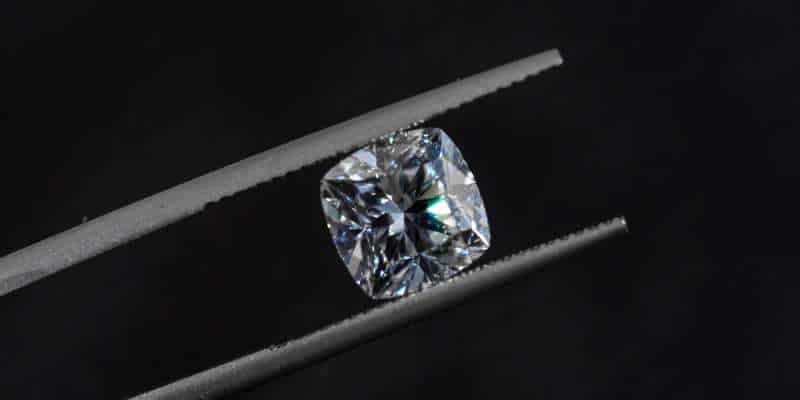
Cushion Cut
The cushion cut is a diamond shape characterized by its square shape with rounded corners, resembling a pillow. This distinctive shape is where it derives its name from. Cushion cut diamonds are available in various versions, all of which emphasize their ability to disperse light and create a remarkable amount of fire and sparkle.
In terms of value for money, the cushion cut is considered one of the most impressive diamond shapes. It offers a great deal of affordability, primarily due to the minimal wastage of the original rough diamond during the cutting and polishing stages. As a result, cushion-cut diamonds are remarkably inexpensive compared to other shapes.
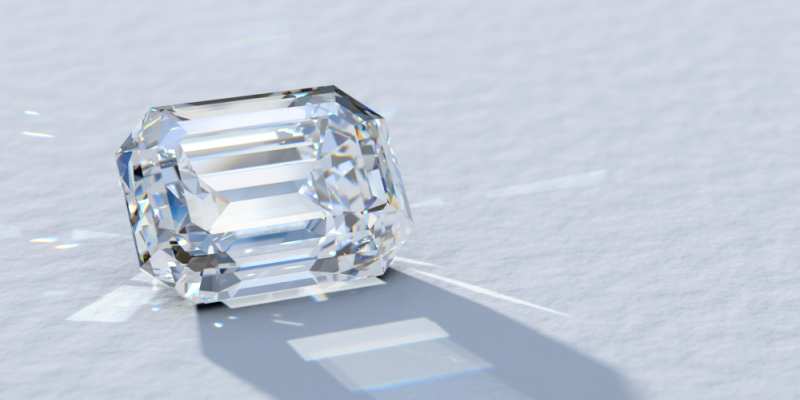
Emerald Cut
Emerald cut diamonds are characterized by a wide table surface and long, straight lines known as “steps,” which create captivating reflections. While some emerald cut diamonds have a square shape, the majority of them are rectangular.
The broad table surface of the emerald cut exposes imperfections more easily, so it’s advisable to choose a diamond with a relatively high clarity grade, preferably a VS1 or VS2 grade, for most diamonds.
Similar to cushion and princess cuts, the emerald cut maximizes the utilization of the rough diamond, making it an excellent value-for-money option. This diamond cut’s distinctive shape gives it a more substantial appearance compared to other diamond shapes of similar carat weight, which is always a desirable feature.
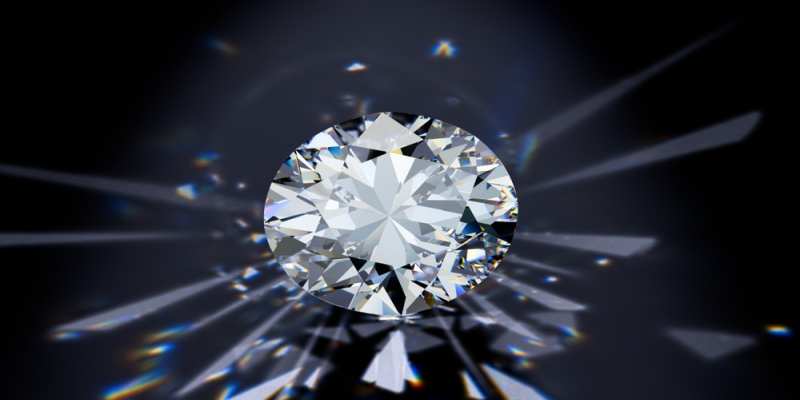
Oval Cut
Oval-cut diamonds have a distinct oval shape, as the name suggests. This shape offers excellent durability and exceptional brilliance.
One of the notable advantages of the oval cut is its perceived size: Oval-cut diamonds appear larger than they actually are due to their elongated shape resulting from the cutting and polishing process.
Oval cut diamonds make efficient use of the rough gemstone, providing great value for money compared to round cut diamonds.
If you desire a diamond that appears impressive, substantial, and radiant without the cost associated with a round brilliant cut, the oval shape is an excellent choice.
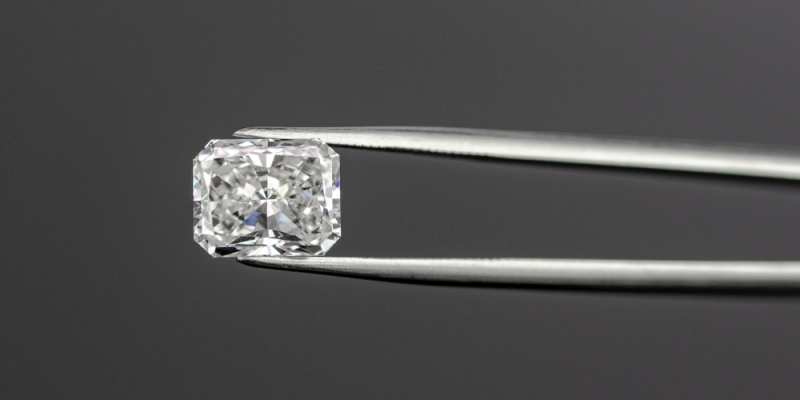
Radiant Cut
The radiant diamond cut was introduced by Henry Grossbard in the 1970s. It was designed to combine the best qualities of the round brilliant cut, particularly its brilliance, with the perceived size of the emerald cut.
Radiant cut diamonds typically have 62 to 70 facets, with a majority of them on the pavilion. Similar to oval and emerald cuts, the radiant cut showcases a distinct shape that creates the illusion of a larger diamond.
In addition, diamonds with a radiant cut are known for their durability and long-lasting nature.
The multitude of facets in this diamond cut makes it challenging to detect inclusions. Therefore, even diamonds with a clarity grade of SI1 or SI2 can still appear excellent in terms of clarity.
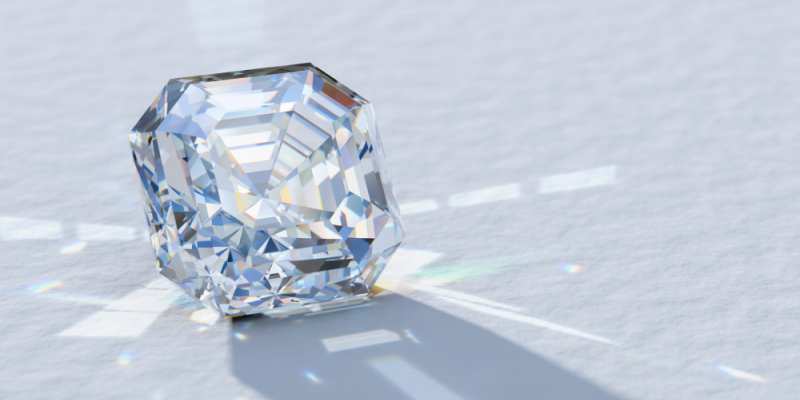
Asscher Cut
The Asscher cut is a step-cut diamond shape with 58 facets that was initially developed by the Royal Asscher firm in the early 20th century.
Asscher cut diamonds have a square appearance similar to emerald cuts.
This cut emphasizes the purity and brilliance of the diamonds, meaning that if the color and clarity are good, they can appear stunning.
However, any inclusions in the diamond will be more noticeable compared to round brilliant or princess cut diamonds.
Asscher cut diamonds utilize a significant portion of the original rough diamond, similar to emerald cuts. As a result, they often offer better value per carat compared to round cut and similar diamonds.
Fancy Diamond Shapes
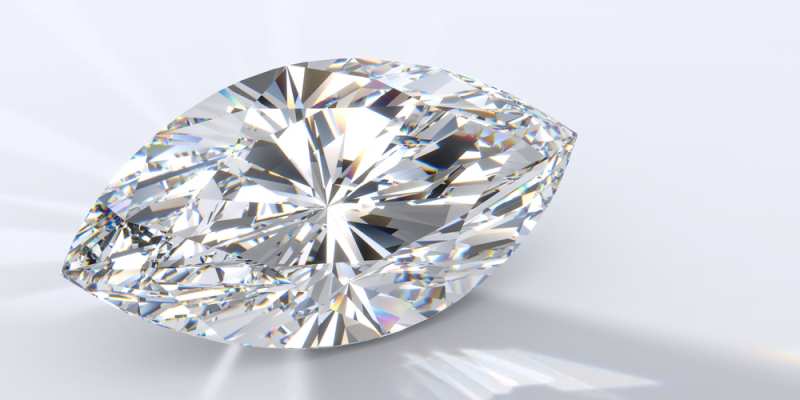
Marquise Cut
The Marquise cut is a beautiful and elegant diamond cut that originated in the 18th century. It was created in response to King Louis XV of France’s request for a diamond cut in the shape of his prominent mistress, Jeanne-Antoinette Poisson, Marchioness Madame de Pompadour.
The Marquise cut features a unique shape that gives the illusion of a larger size compared to many other diamonds of the same carat weight but cut differently.
However, assessing the cut quality of a Marquise diamond can be challenging due to its distinctive shape.
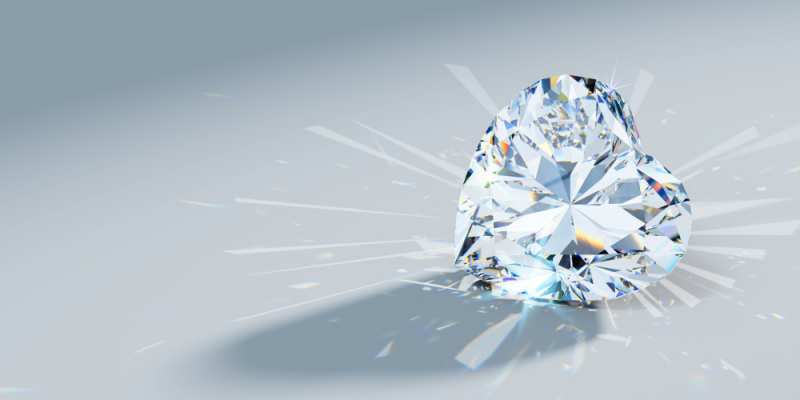
Heart Cut
Heart-shaped diamonds are incredibly charming and make for a wonderful way to express your love to your future fiancé.
The heart shape is a modified version of the round brilliant cut, although it may not appear so at first glance. It is important to choose a heart-shaped diamond with excellent symmetry, especially in the lobes.
As a brilliant cut, the heart shape effectively conceals minor imperfections that may be present within the diamond.
Despite their similarities, heart-shaped diamonds utilize a larger portion of the original rough diamond compared to round brilliant diamonds. Consequently, they are generally more affordable than round brilliant cut diamonds.
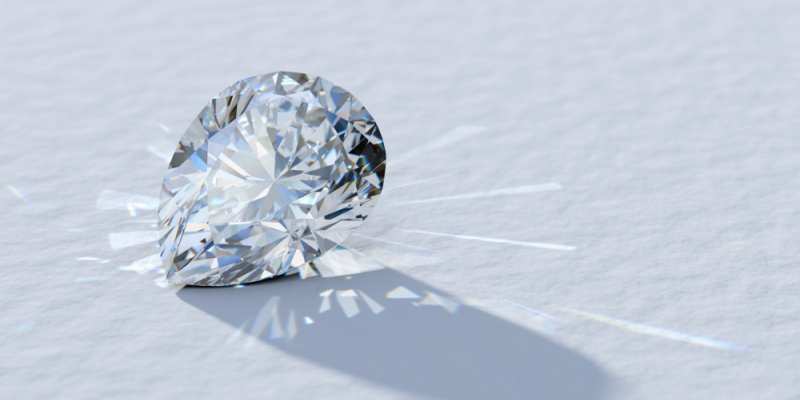
Pear Cut
Pear-shaped diamonds are renowned for their elegant and timeless appeal, featuring a rounded side that tapers to a point at the other end.
When selecting a pear-shaped diamond, it is crucial to consider the proper proportions, just like with any other stunning diamond shape.
Pear-shaped diamonds make efficient use of the original raw diamond material, offering excellent value for money due to their unique form.
Moreover, this shape effectively conceals inclusions, allowing for a stunning appearance even with a clarity grade of SI1 or SI2.
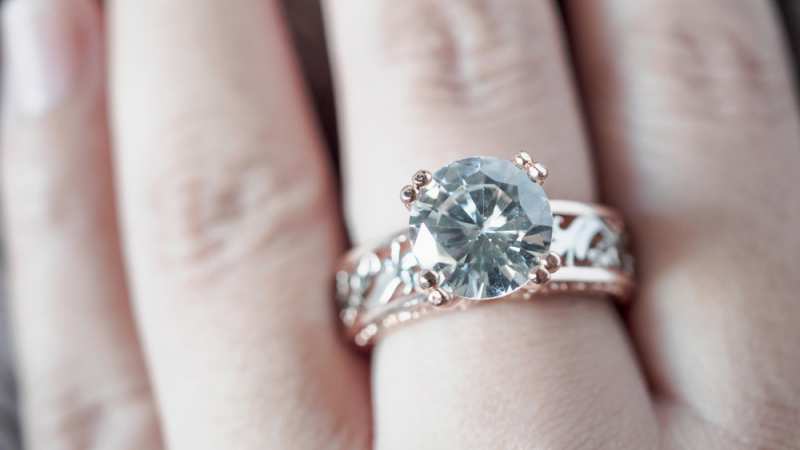
Why Shapes Of Diamonds Matter?
Each diamond possesses its own unique qualities. The shape and cut of a diamond determine how it interacts with light, creating the desired sparkle that many individuals seek.
Interestingly, the shape and cut can also create an illusion of a larger size, leading people to believe they have a more valuable diamond.
When it comes to determining the best diamond shape, round diamonds are known for their exceptional brightness and sparkle. However, they are also the most expensive option. While fancy diamond cuts offer a more affordable alternative to round brilliants, they typically don’t exhibit the same level of radiance.
Additionally, finding a well-cut fancy-shaped diamond can be a challenge.
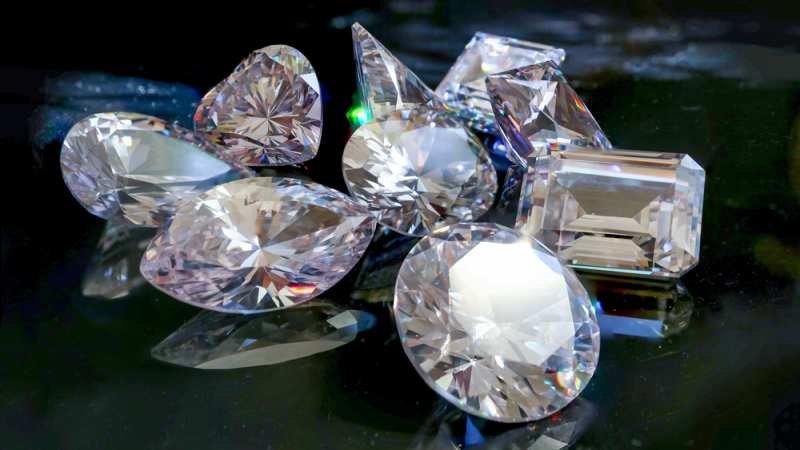
The Most Expensive and Most Affordable Diamond Shapes
The round brilliant cut is typically the most expensive diamond shape when considering the price per carat. This is because a significant portion of the raw diamond needs to be discarded during the cutting and polishing process.
On the other hand, diamond shapes such as Asscher, radiant, emerald, cushion, and princess cuts offer excellent value in terms of carat weight. These shapes can cost up to 45% less per carat compared to a round cut diamond of similar color and clarity.
It’s important to note that certain cuts may be more susceptible to displaying color, inclusions, and other flaws, which can affect their appearance and price.
However, if obtaining a larger diamond is your primary objective, it’s evident that many fancy cuts provide exceptional value for money. If you desire a sizable center stone but have budget constraints, opting for one of these fancy-shaped diamonds would be an ideal choice.
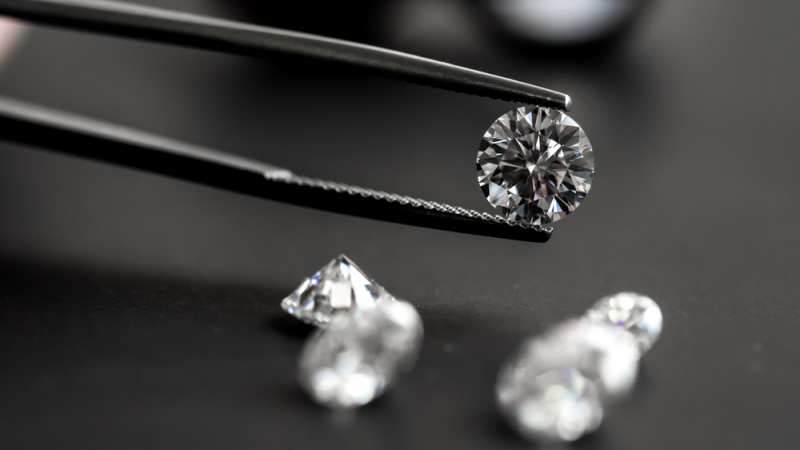
Reasons Why Round Cut Is The Most Popular (And Expensive)
Despite the emergence of various engagement ring trends over the years, the round diamond has consistently maintained its popularity, surpassing all other shapes. This enduring demand has contributed to their higher cost, but there are additional reasons why round cut diamonds hold such value:
- Superior light reflection:
Round diamonds are meticulously cut to maximize their brilliance. They possess a captivating shine that is highly desired, especially for jewelry pieces intended for everyday wear, like engagement rings and wedding bands. The symmetrical proportions of round diamonds allow light to enter and reflect within the stone, resulting in a brighter and more captivating appearance. - Greater utilization of raw material:
Cutting a round diamond requires a larger initial diamond compared to other shapes. The aim during the cutting process is to minimize wastage. However, round-cut diamonds tend to generate more waste than other shapes. This higher yield of raw material contributes to their higher per-carat value compared to fancy-shaped diamonds. - Consistency and precision:
Round diamonds offer a level of consistency and precision that other shapes may lack. When you purchase a round diamond, you know precisely what you’re getting. In contrast, other diamond shapes, like princess cuts, are often assumed to be square, but they can vary and are commonly rectangular. These variations can impact the cut quality and how the diamond reflects light, potentially reducing its value. Round-shaped diamonds are renowned for their accuracy, making them easier to cut with precision.
In summary, the round diamond’s exceptional light reflection, efficient utilization of raw material, and consistent cutting standards contribute to its status as the most valued diamond shape in the market.
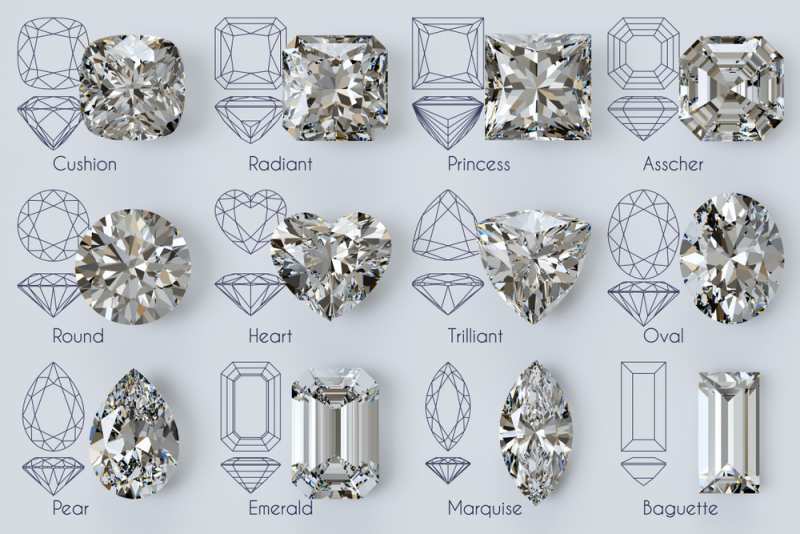
Which Diamond Cut Holds Its Value: Conclusion
When it comes to choosing a diamond shape that offers the best value for your investment, there are several factors to take into account.
If you’re looking for a larger diamond at a more affordable price, the emerald shape is an excellent choice. It provides a captivating appearance and can offer great value for money. Alternatively, you might consider unique and eye-catching shapes like pear, marquise, or princess cuts, which can also provide a distinctive and radiant look.
However, if you prefer a classic and timeless diamond shape, nothing quite compares to the round diamond. While it may come with a slightly higher price tag, it offers unmatched elegance and a timeless appeal.
Ultimately, it’s essential to consider your partner’s taste and style preferences when searching for an engagement ring, along with considering the price and overall aesthetics. Finding the perfect balance between value, beauty, and personal preference will ensure a meaningful and cherished choice.


